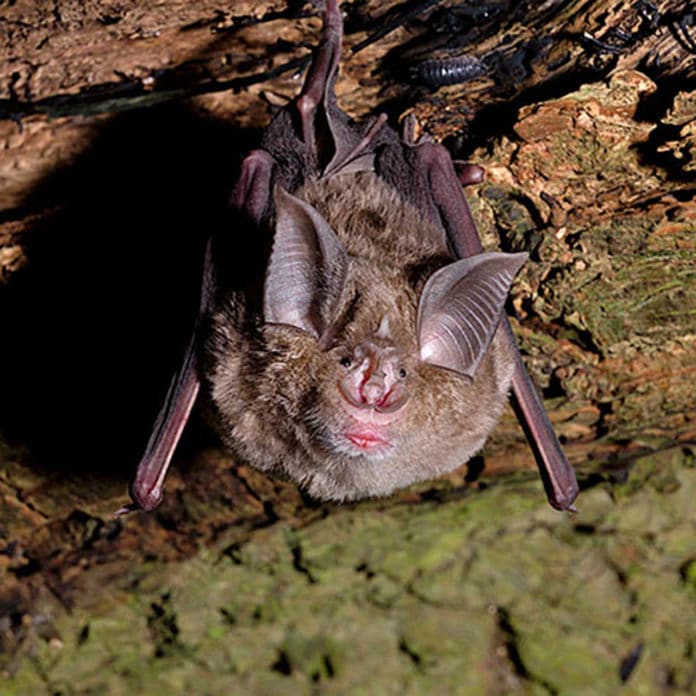Bats possess extraordinary adaptations, including flight, echolocation, extreme longevity, and unique immunity. Now, scientists from the University of Bristol reveals the genetic basis of bats’ superpowers.
According to their study, the raw genetic material codes for bats’ unique adaptations and superpowers.
To uncover bats’ unique traits, the Bat1K consortium led by researchers at University College Dublin, the Max Planck Institutes of Molecular Cell Biology and Genetics (Dresden), and the Max Planck Institute for Psycholinguistics (Nijmegen), generated and analyzed six highly accurate bat genomes that are ten times more complete than any bat genome published to date.
They generated these genomes using new technologies to sequence the bats’ DNA. Using new methods, scientists were able to assemble these pieces into the correct order and to identify the genes present.
Eugene Myers, Director of Max Planck Institute of Molecular Cell Biology and Genetics, and the Center for Systems Biology, Dresden, Germany, and the study’s Senior Author, added: “Using the latest DNA sequencing technologies and new computing methods for such data, we have 96-99 percent of each bat genome in chromosome level reconstructions – an unprecedented quality akin to for example the current human genome reference which is the result of over a decade of intensive “finishing” efforts. As such, these bat genomes provide a superb foundation for experimentation and evolutionary studies of bats’ fascinating abilities and physiological properties.”
These newly generated bat genomes were compared to 42 other mammals. The aim was to address the unresolved question of where bats are located within the mammalian tree of life.
Using novel phylogenetic methods and comprehensive molecular data sets, scientists found that the strongest support for bats being most closely related to a group called Ferreuungulata that consists of carnivores (which includes dogs, cats, and seals, among other species), pangolins, whales, and ungulates (hooved mammals).
Later on, scientists systematically searched for gene differences between bats and other mammals. They identified specific genome regions that have evolved quite differently in bats and the loss and gain of genes that may drive bats’ unique traits.
Michael Hiller, Max Planck Research Group Leader, Max Planck Institute of Molecular Cell Biology and Genetics in Dresden, Max Planck Institute for the Physics of Complex Systems, and the Center for Systems Biology, Dresden, Senior Author, added: “Our genome scans revealed changes in hearing genes that may contribute to echolocation, which bats use to hunt and navigate in complete darkness. Furthermore, we found expansions of anti-viral genes, the unique selection of immune genes, and the loss of genes involved in inflammation in bats. These changes may contribute to bats’ exceptional immunity and points to their tolerance of coronaviruses.”
The team also found evidence that bats’ ability to tolerate viruses is reflected in their genomes. The exquisite genomes revealed “fossilized viruses,” evidence of surviving past viral infections. They showed that bat genomes contained a higher diversity than other species providing a genomic record of historical tolerance to viral infection.
Professor Gareth Jones from Bristol’s School of Biological Sciences, who contributed to the study, said: “It has been 20 years since the first human genome was sequenced, and today we can obtain almost complete gene annotations for the genomes of wild mammals to better understand their adaptations and evolution. Analysis of the genomes helped resolve the phylogenetic position of bats in the mammal tree (basal in a lineage that includes carnivores, pangolins, hoofed mammals, pangolins and cetaceans), and supported the hypothesis that laryngeal echolocation is an ancestral trait in all bats. Moreover, the bat genomes revealed the incorporation of diverse ‘fossilized’ viral genomes and selection on immunity-related genes that may contribute to bats’ exceptional immunity.”
“One of the genomes we have been studying, to help us understand aging in bats is from the greater horseshoe bat, which has exceptional longevity for their body size. For example, a six gram Brandt’s bat can live for around 41 years. We plan to use the genome now to investigate epigenetic changes during aging, and how these changes cause some animals to age biologically faster than expected for their chronological ages.”
Given the quality of the bat genomes, the team uniquely identified and experimentally validated several non-coding regulatory regions that may govern bats’ key evolutionary innovations.
Sonja Vernes, Co-Founding Director Bat 1K, Max Planck Institute for Psycholinguistics, Nijmegen, Senior Author, said: “Having such complete genomes allowed us to identify regulatory regions that control gene expression that is unique to bats. Importantly we were able to validate unique bat microRNAs in the lab to show their consequences for gene regulation. In the future, we can use these genomes to understand how regulatory regions and epigenomics contributed to the extraordinary adaptations we see in bats.”
Journal Reference:
- Jebb, D., Huang, Z., Pippel, M. et al. Six reference-quality genomes reveal the evolution of bat adaptations. Nature 583, 578–584 (2020). DOI: 10.1038/s41586-020-2486-3
